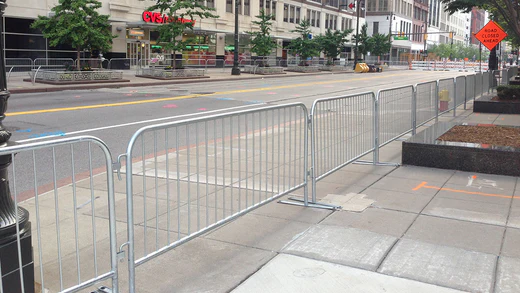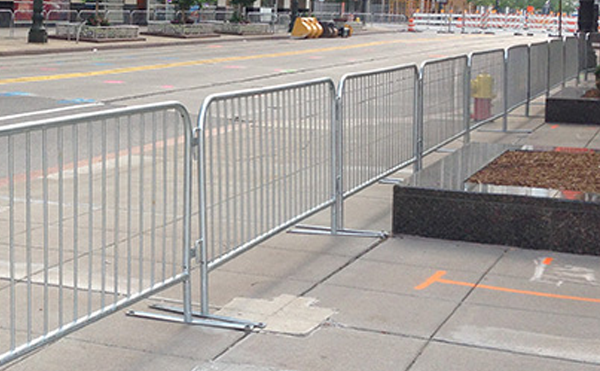Guide: Choosing the Right Barricade For You
Barricades play an important role in crowd control and safety. They are used to manage the movement of people and vehicles in a variety of settings, from construction sites to outdoor events. However, with so many different types of barricades available on the market, it can be challenging to determine which one is the best for your specific needs. In this guide, we will provide a comprehensive overview of three main types of barricades: plastic, steel, and expanding, and how to choose the right barricade for your needs.
Choosing Plastic Barricades
Plastic barricades are lightweight and easy to transport, making them ideal for low-capacity outdoor events. They are made from high-density polyethylene, which is a durable and UV-resistant material. Plastic barricades are also available in a variety of colors, which can help improve visibility and enhance safety. Because of these aspects plastic barricades have a big advantage in the fact that they are easy to set up and take down, which makes them ideal for short-term events. They can be linked together to create a continuous barrier, and they are available in a variety of sizes to accommodate different crowds.
However, while plastic barricades have some advantages they also have some disadvantages such as not being as durable as steel barricades and they can be more prone to damage from heavy use. This means that in some cases they may not be suitable for long-term use or in high-traffic areas where they may be subjected to frequent wear and tear. Additionally, plastic barricades may not be as effective as steel barricades at preventing people from falling into or climbing over them.
Choosing Steel Barricades
Steel barricades are heavy-duty and sturdy, making them ideal for use in high-traffic areas such as construction sites, concerts, and sporting events. They are made from steel tubing, which provides strength and durability, and they are available in a variety of sizes and designs to meet different needs. One of the main advantages of steel barricades is their feet options and durability. They are designed to withstand heavy use and can be used for long-term applications. Along with this, steel barricades contain a large set of different options including feet options(Roller, Flat, Bridge, and Heavy Duty) and color options.
However, steel barricades are significantly heavier and harder to transport than other barricade options that are provided. Options such as rolling feet help this but to transport and store steel barricades may require specialized equipment such as barricade carts or storage carts.
Choosing Expanding Barricades
Expanding barricades, also known as accordion barricades or scissor barricades, are designed to be portable and easy to set up. They are ideal for indoor settings such as airports, museums, and convention centers, where they can be used to cordon off areas or create temporary barriers. Expanding barricades are made from lightweight materials such as aluminum or plastic, which makes them easy to move and transport. One of the main advantages of expanding barricades is their portability. They can be folded up and stored in a compact space when not in use, which makes them ideal for facilities with limited storage space. Expanding barricades are also easy to set up and take down, which makes them ideal for short-term applications.
However, expanding barricades may not be as effective as steel barricades or plastic barricades at preventing people from climbing over or running into them. They may also not be as durable as steel or plastic barricades, which can make them less suitable for long-term use or in high-traffic areas. Additionally, expanding barricades may not be suitable for outdoor use as they are much less weather resistant than steel or plastic barricades.

